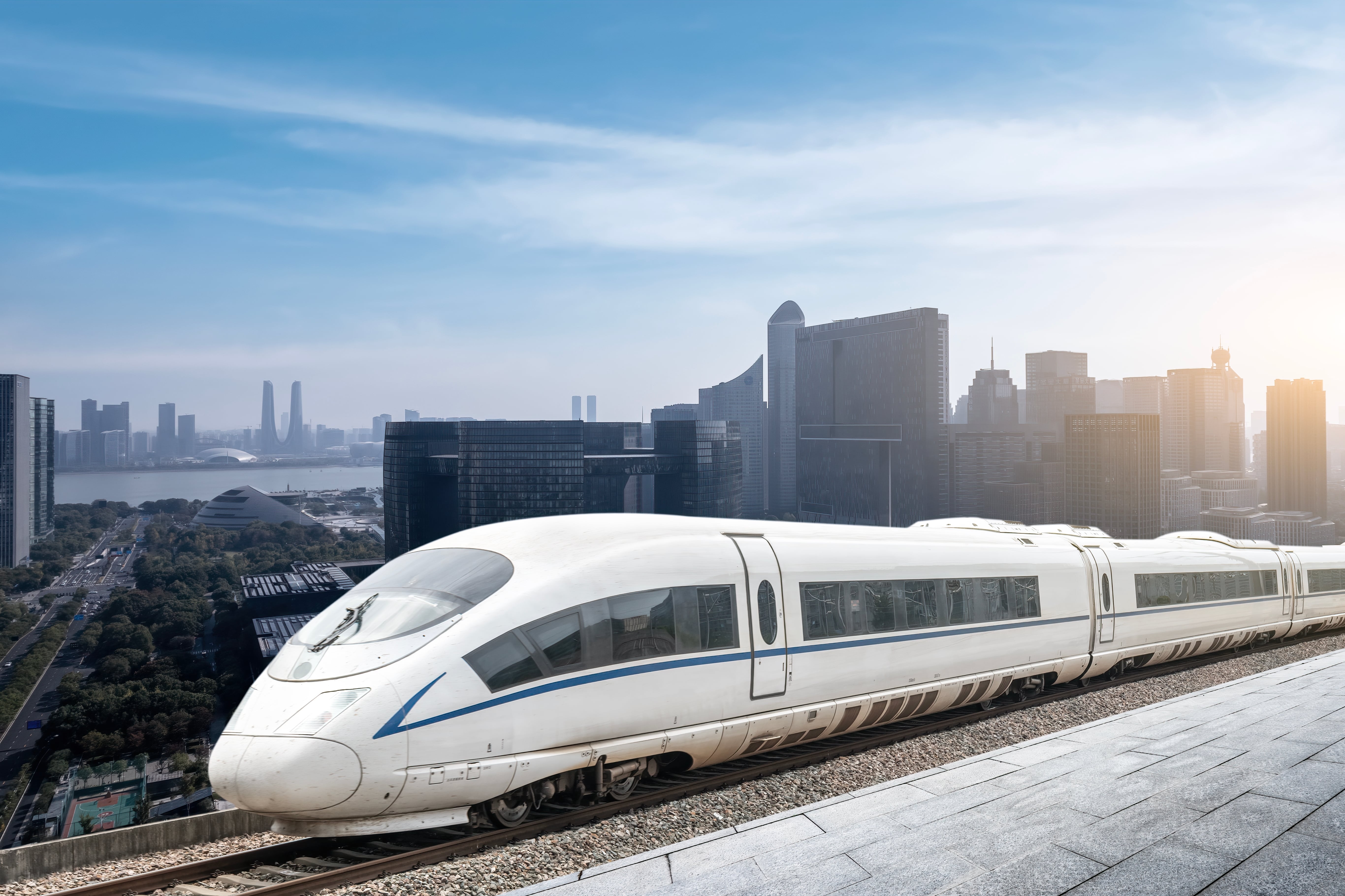If you were to show someone from the 1820s what modern train technology looks like, they would likely be amazed to see how far we’ve come. Future train innovations and track upgrades in the UK could inspire the same sense of wonder for today’s passengers.
The trains of the future

In the 19th century, steam engines powered by coal revolutionised travel. Suddenly, exploring far beyond our local surroundings became possible. By the mid-20th century, diesel became the fuel of choice. It was cleaner, more efficient than coal, making trains faster and easier to maintain.
In the next 30 years, it’s possible that we'll say goodbye to diesel. Electrification, battery power, and hydrogen are all set to shape the trains of the future.
1. Electrification
Railway operators worldwide are working to reduce their environmental impact, and electric trains are key to the shift. Rather than relying on diesel, these trains draw power from overhead lines or a third rail.
Electric trains offer several benefits:
- Zero emissions for cleaner air in cities and tunnels.
- Improved energy efficiency, saving money for train operators.
- Faster journeys as they can accelerate quicker and travel at higher speeds.
- Smoother journeys due to fewer moving parts and improved suspension.
- Greater hauling capacity, reducing the number of trips needed.
Currently, around 71% of trains are electric in the UK, this number is growing as the country targets net zero emissions by 2050. Switzerland’s rail network is now fully electrified, Japan’s bullet trains highlight the efficiency of electric rail, and China now has the largest electrified rail network outside of Europe.
2. Battery power
Battery-powered trains are already transforming parts of the UK rail network. The West Midlands Metro is powered by onboard batteries in sections without overhead wires. Battery-powered trains are becoming more prominent across the network, with successful trials between Leeds and Liverpool as well as York and Manchester.
These battery-powered trains can reach speeds of 120 km/h, cut fuel costs up to 50%, and have a range of up to 150 kilometers. This approach allows trains to use overhead lines on electrified tracks and battery power where wires aren’t available.
3. Hydrogen power
Although hydrogen-powered trains are still in development, they hold great potential for rail travel over the coming years. Hydrogen is a renewable energy source and trains using it create electricity by combining hydrogen and oxygen in fuel cells. The only by-product of this is water vapour.
First trialled in 2018, Alstom’s Coradia iLint hydrogen train is now being developed in several countries.
Driving the trains of the future

If you boarded a Docklands Light Railway train, you’d immediately notice something unusual: it has no driver. While they might sound like futuristic trains, driverless locomotives are not new, so expect them to become a more common sight in the next few years.
There are four types of driverless trains:
1. GoA1: Trains can move automatically between different stations, but the driver can still take control if needed, such as if they need to stop in an emergency.
2. GoA2: Similar to GoA1, the GoA2 can drive itself between stations, but the driver’s focus is on passenger safety and platform checks.
3. GoA3: These trains operate autonomously. There is an attendant on board who can take control,but their role is to mainly help passengers, making announcements and doors.
4. GoA4: Fully autonomous trains with no staff onboard. The system takes care of everything, from driving to passenger safety.
While only a few routes worldwide are fully driverless, improvements in technology are expected to increase their presence in the years ahead.
What futuristic trains will look like

Trains in the future could look drastically different from those we know today.
1. Maglev trains
Maglev (short for “magnetic levitation”) trains use magnetic forces to glide smoothly along the tracks.
In the 1940s, British engineer Eric Laithwaite built the first full-size linear induction motor, which paved the way for the development of Maglev technology. In 1984, the world’s first commercial Maglev people mover was introduced in Birmingham, this connected the airport to a nearby railway station.
Maglev is exciting and innovative but comes with some challenges. The infrastructure is costly, and magnet productions can have environmental impacts. Despite this, Japan’s Churo Shinkanen aims to connect Tokyo and Nagoya in just 40 minutes, and continues to develop with completion now anticipated by 2034.
2. Hyperloop and Vactrains
In 1799, inventor George Medhurst proposed moving goods at high speed through cast iron pipes. This technology used an artificial vacuum created inside the pipes, which could move from one point to another.
Over two hundred years later, the idea of high-speed travel through tubes has resurfaced in the form of Elon Musk's Hyperloop.
Hyperloop pods use magnetic levitation within low-pressure tubes, dramatically reducing air resistance to achieve speeds of up to 1,200 km/h. For comparison, Japan’s Shinkansen Bullet Train has a top speed of around 320 km/h. Whilst promising, the high costs and infrastructure challenges have delayed widespread adoption.
Vactrains take this concept further by operating in a near-total vacuum, making them even more energy-efficient with reduced magnetic requirements. Despite their potential, upfront costs remain a significant hurdle.
The rail network of the future

There are several factors impacting how future trains might look and work.
- Capacity: As cities grow, trains will need to carry more passengers and goods.
- Safety: Stations may need to be redesigned to ensure passenger safety on crowded platforms. Signals will need upgrading as overhead lines can sometimes interfere with how they work.
- Climate change: Rising sea levels may require railways to increase flood barriers, better drainage, and higher tracks to minimise disruptions. Rails may also need to be improved to withstand high winds, heavy rain, snow, and heatwaves.
- Passenger needs: To compete with cars, buses, and planes, future trains will need flexible designs that meet evolving travel expectations.














